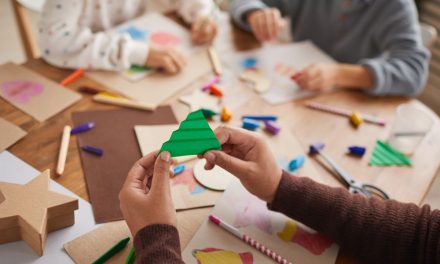Crafting for kids is not only a great way to keep them engaged and entertained but also a fantastic opportunity to nurture their creativity. Handicrafts for kids offer a multitude of benefits, from developing fine motor skills to enhancing problem-solving abilities while having endless fun and unleashing their imagination.
Engaging in crafting activities allows children to express themselves artistically and explore their unique ideas. By providing them with various materials such as paper, glue, scissors, and paints, we can encourage them to create their own masterpieces. Through this process, kids learn the importance of patience, perseverance, and attention to detail.
Crafting also provides an avenue for children to think outside the box and find innovative solutions. As they encounter challenges during the crafting process, they develop problem-solving skills by finding alternative ways or adapting their original plans.
Moreover, crafting for kids is all about having fun! It is an opportunity for them to let loose and enjoy the process of creating something with their own hands. Whether it’s making colorful paper collages or designing unique friendship bracelets, crafting allows children to immerse themselves in activities that bring joy and satisfaction.
In the upcoming sections of this article, we will delve into specific craft ideas that are suitable for different age groups. From simple origami projects to more intricate DIY crafts, we will provide step-by-step instructions along with tips on how parents or guardians can actively participate in these creative endeavors.
So let’s dive into the world of crafting for kids where imagination knows no bounds! Together, let’s inspire young minds and watch as they flourish through creativity while having endless fun along the way.
Handcrafting activities can be a wonderful way to foster their creativity, develop their fine motor skills, and provide them with a sense of accomplishment. Here are 10 tips to get children started on handcrafting for fun and creative development:
Choose Age-Appropriate Projects: Select craft projects that are suitable for your child’s age and skill level. Simple projects with clear instructions are best for beginners.
Gather Necessary Supplies: Make sure you have all the materials and tools required for the chosen craft before starting. Organize them neatly in a designated crafting area.
Demonstrate and Explain: Show your child how to do the craft step by step. Explain the process clearly and encourage questions.
Emphasize Creativity: Encourage your child to add their personal touch to the project. Allow them to choose colors, patterns, and embellishments.
Promote Problem-Solving: If your child encounters challenges, encourage them to problem-solve and think of alternative solutions rather than providing all the answers.
Offer Praise and Encouragement: Positive reinforcement is essential. Compliment their efforts, even if the final result isn’t perfect. Focus on the process, not just the outcome.
Create a Crafting Space: Set up a dedicated crafting area with a comfortable workspace. Keep it well-organized and stocked with supplies.
Explore Different Crafts: Introduce your child to various crafting techniques and materials, such as painting, drawing, paper crafting, knitting, or clay modeling. This can help them discover their interests.
Crafting Time Together: Spend quality time crafting with your child. It’s a great opportunity for bonding and showing them that you value their creativity.
Display and Celebrate Their Work: Proudly display their finished projects around the house. Celebrate their achievements, and encourage them to share their creations with friends and family.
Remember that the primary goal of handcrafting with children is to have fun and nurture their creativity. Be patient and let them explore their interests and abilities at their own pace. Over time, crafting can become a cherished hobby that promotes self-expression and confidence.






